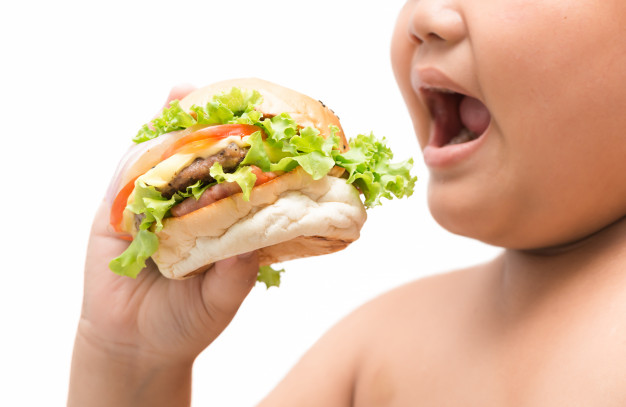No parent wants his or her child to look underfed or too skinny, as the media depicts a healthy child as one who looks well-fed and chubby. This means that a child could be heading towards obesity without the parents being aware. As a result, cases of childhood obesity are very common, particularly in children from high social classes.
As a parent, are you aware of the causes of childhood obesity and do you know how to help your child? If not, this article will be a good resource to guide you.
What is Childhood Obesity?

Obesity specifically refers to excess accumulation of body fat, which is different from being overweight i.e weighing more than normal weight. Children who are overweight are at an increased risk of becoming obese.
Childhood obesity, also known as pediatric obesity, is a condition that indicates a child is significantly overweight for his or her age and height. Childhood obesity is the most prevalent nutritional disorder among children and predisposes kids to type 2 diabetes, kidney disease, insulin resistance and hypertension.
Childhood obesity is easy to detect simply by weight that’s above normal and common symptoms such as breathing disorders, pain in the knees and lower back, abdominal obesity and a sedentary lifestyle.
What are the Major Causes of Childhood Obesity?
Generally, childhood obesity is caused by consuming lots of fatty food or family genetic factors. More specifically, here are some of the major causes of childhood obesity:

#1. Consumption of fatty foods and a high sugar diet
Eating food in very large portions or consuming high-calorie drinks and sweetened beverages is easily one of the major causes of childhood obesity.
#2. Lack of Physical Activity or Exercise
When a child’s body consumes more calories than it burns, that’s a fast road to childhood obesity. Most children these days are prone to a low level of physical activity because of the amount of time spent using technology like cellphones, video games or TV. It’s important to engage your child in fun indoor activities for kids if you want to help him or her stay fit
#3. Genetic factors
If one or both of a child’s parents are obese, then that child is at the risk of childhood obesity due to the genes of parents. A family history of obesity even if not directly from the child’s parents can cause childhood obesity.
#4. Medical factors
There are certain medical conditions that tend to increase a child’s appetite. Hormonal conditions such as hypothyroidism, low thyroid function and medicines such as steroids or anti-seizure drugs can increase the risk of childhood obesity.
Ways to Help Your Child With Childhood Obesity
It is often said that prevention is better than cure, but in a case where you can’t prevent childhood obesity, taking quick and immediate action is your next best bet.
Since you already know the causes of childhood obesity, it’s easy to guess that treating it will involve lowering your child’s calorie consumption, improving his or her diet and ensuring an increase in physical activity. As you help your child through this phase, remember to focus on weight maintenance as opposed to weight loss. Also, pay attention to your child’s medical conditions and age.

#1. Get your child to move
In 2010, Michelle Obama launched the “Let’s Move” campaign with the goal to end childhood obesity in the next generation. Getting your child to move and partake in physical activity or exercise helps combat childhood obesity. Plan family activities like skipping, swimming, riding bicycles or walking and limit sedentary activities like sitting for too long watching TV or playing video games. While doing this, ensure you choose activities that your child enjoys, that aren’t embarrassing or difficult to grasp.

#2. Create a healthy meal plan
Maintaining a healthy diet is very important for dealing with childhood obesity and healthy eating starts at home. As a parent, focus on gradually changing your family’s eating habits. Involving the entire family will ensure your obese child doesn’t feel segregated and other kids can also learn healthy eating habits.
#3. Choose the right environment for your child to grow up in
A child is likely to adopt habits from people within his or her environment. For example, if a parent has poor exercise habits or a poor diet a child can also adopt those habits. Having a safe neighbourhood that supports outdoor activities can encourage kids to be more physically active. Enrolling your child in a school that provides an environment in which healthy eating and physical activity behaviours are reinforced will help against childhood obesity.
Also, if you lay down rules at home that regulate TV or video game time, you can prevent your child from spending long hours on electronic gadgets, which tends to limit physical activity and expose kids to commercials or shows that promote unhealthy high-calorie snacks.
#4. Seek advice from healthcare professionals
The most important thing about helping an obese child is to consult a paediatrician first especially if you believe your child might be overweight due to a medical condition. Afterwards, you can then talk to a physician, physical therapist and dietician.
In conclusion, the causes of childhood obesity are largely based on your child’s dietary habits. Children who eat more than they need, store extra calories in fat cells which are meant to be used for energy later. When they don’t use the stored energy, they don’t burn those fat cells. Instead, they develop more, which leads to obesity. Before you take action, talk to your child and make him or her comfortable with sharing feelings and concerns with you. Whatever approach you choose to help your child with obesity, aim to make physical activities and healthy eating habits a family affair.

